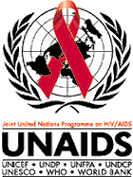

Sexually Transmitted Diseases
The global burden of sexually transmitted diseases (STDs) is staggering and many developing countries are experiencing epidemic proportions of STDs with no sign of remittance.
In 1996, the World Health Organizations (WHO) estimated the global annual incidence of curable STDs (excluding HIV and other viral STDs) to be 333 million. Of these 333 million cases, 12 million are attributable to syphilis, 62 million to gonorrhea, 89 million to chlamydia, and 170 to trichomoniasis.Sub-Saharan Africa bears the largest burden of these new cases, responsible for 11 to 35% of all new cases of curable STDs. STD infections affect the most vulnerable populations--women, children, and youth. Among women between the ages of 15 and 44, STDs are the second leading cause of morbidity and mortality, following only maternal causes. Many STDs are asymptomatic and are therefore inadequately treated or left untreated altogether. (CDC)
The STD/HIV Connection
The STD epidemic threatens to compound the HIV epidemic currently ravaging
much of Africa. Research demonstrates that the presence of an untreated
STD can cause a person to be three to five times more likely to contract
HIV. Further, an individual who is infected with both HIV and a STD transmits
HIV more easily. Providing prompt and adequate STD treatment under specific
conditions had demonstrated a 40% decrease in the amount of heterosexually
transmitted HIV.

